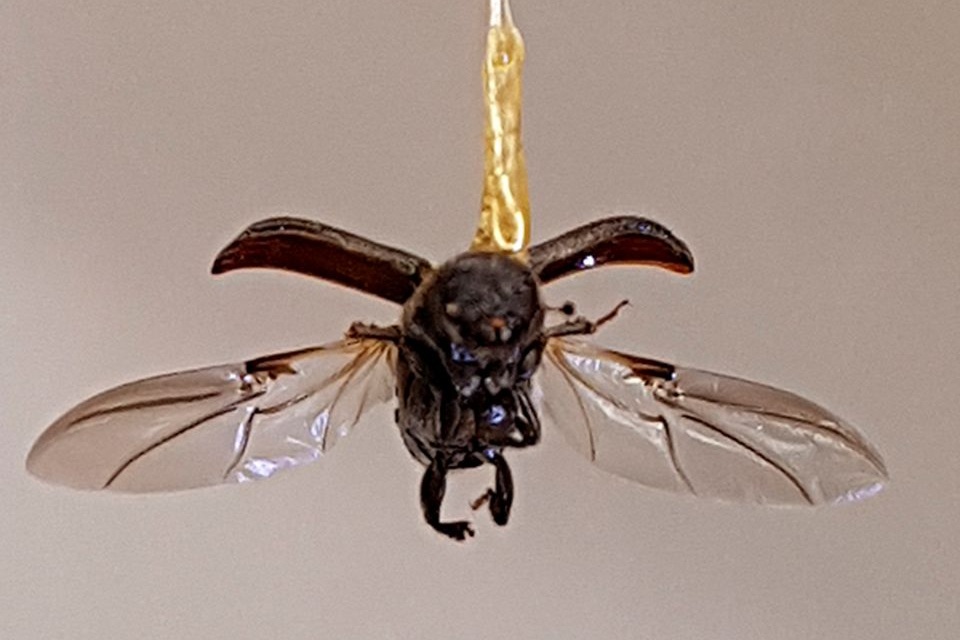
A mountain pine beetle in flight, in a flight mill used to test how fast and far it can fly. Photo credit: Journal of Experimental Biology
Whether they travel only a few metres or tens of kilometres to a new host tree, female pine beetles use different strategies to find success—with major negative consequences for pine trees, according to new research by University of Alberta biologists.
The research, led by graduate student Kelsey Jones, examined the relationship between host colonization success by female mountain pine beetles and the distance travelled to find their new homes.
Since the early 1990s, an outbreak of mountain pine beetles has affected more than 18 million hectares of forest in the western provinces. Understanding the behaviour of these beetles is key in developing management strategies to prevent further damage to Alberta’s boreal forest.
“It is hard to predict the continued invasion by the mountain pine beetle using information from this study alone,” said Jones. “However, our work does indicate that beetles which fly for long distances can still call in many fellow beetles to mass attack trees. This indicates that, as beetles move further eastward and forest stands become thinner, they will likely still have the capacity to colonize hosts.”
Some beetles fly distances more than 30 kilometres while others stay close to home, traveling no more than two metres away to find a new host tree. But this study shows that beetles may have different strategies for success that are based on the distance of an individual’s dispersal flights.
“Both long and short-distance flight strategies are beneficial to mountain pine beetle host colonization in different ways,” explained Jones, who completed her master’s under the supervision of Maya Evenden, professor in theDepartment of Biological Sciences. “As short- and long-distance flyers successfully colonize host trees for reproduction, both strategies will remain in the population, maintaining genetic variability.”
The study showed that female pine beetles who travel long distances tended to lose weight, but were able to produce the most pheromone, signalling their arrival to other beetles and therefore increasing their chances of attracting beetles from distant populations to facilitate mass attack of tree hosts. On the other hand, beetles who stuck close to home lost the least amount of weight, but also produced the smallest amount of pheromone, instead focusing their energy on host colonization.
The work will be used to inform models of how mountain pine beetles spread throughout the boreal forest, assisting management efforts for monitoring and controlling beetle populations.
Interested in learning more about pine beetles and other bugs? Check out Bugs 101, a massive open online course (MOOC) led by Evenden. Bugs 101 is available for free on theCoursera platform. The course will also be available for credit to undergraduate students at the University of Alberta starting this fall asENT 101.
The paper, “Mechanisms and consequences of flight polyphenisms in an outbreaking bark beetle species,” was published in the Journal of Experimental Biology (doi: 10.1242/jeb.219642). Learn more about this research.